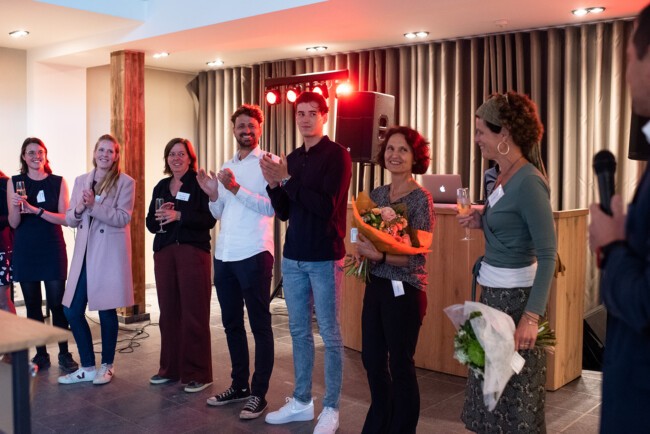
The war for talent:
4 remarkable evolutions
Limited access to the right talent is a barrier to growth for businesses. In this war for talent, new trends are constantly emerging that impact your searches. What evolutions are taking place and how should we adapt our strategy to win over young talent? Find out here!
1. The candidate is the boss

As an organization, you must be fun and inspiring to work for. But that’s not enough. As soon as these young talents have their diploma in their hands, they are encircled by all organizations within a 100 kilometer radius. Through LinkedIn, through job fairs, with attractive paychecks and even goodie bags full of presents. It’s okay to bring out those bells and whistles, but it only strokes their ego. The step where they sign the contract with a pimped pen often doesn’t follow.
Do they notice you in the crowd? Then it’s time to get to know them better. They, like you, want to discover what you have to offer in this selection stage. But be aware that candidates are at the wheels today. They are probably already connected with some of your employees through LinkedIn and have two or three more job interviews underway. In this candidate-driven market, it’s survival of the fittest.
2. High candidate expectations
As an organization, you used to make a difference by offering a interesting job, a nice salary, good fringe benefits and promotions. Today, however, these have become hygiene factors. Young graduates expect to earn the same as their friends. So where can you make a difference as an organization? With sufficient learning opportunities and guidance in the area of personal development, you are already taking a step in the right direction.
Young talents only see stories on social media about milestones achieved, courses taken and other benefits received from their employer. They don’t want to miss out on that.


But growth opportunities and development still appear to be secondary to an optimal work-life balance. That is why certain companies in Scandinavia and Belgium are experimenting with a four-day work week. Extra time on a day off not to be occupied with the job, but with hobbies, family, friends and oneself. So it’s important as an organization to find a good balance between all the benefits. Because that’s where you really reap the benefits.
Finally, they are not just looking for a substantively challenging job. They want a job in which they feel they have an impact on society. Organizations that can make them feel this direct impact are like a pot of honey for the bees.
3. Fast in, fast out

Retaining talent is no longer obvious. Your newly recruited talents are bombarded with tempting offers. Compare it to the choice in the supermarket between ten different jams. Talent consciously chooses a particular jam that they like, but when every few days there is another taste of a new jam to pick up, the temptation cannot always be resisted. So don’t assume that the talent that once chose you will continue to do so.
It’s up to you to avoid seeing your time and money investment go up in smoke. From the beginning, think about a plan that will keep your talents interested and committed to your organization. Since binding talent is not one-size-fits-all you best take actions on the different pillars of retention.
One of the biggest challenges for executives to retain talent is transmitting a company culture that feels good. Your employees can perform well, but if they don’t feel connected to your company, you will lose them. They are more likely to accept an offer from a recruiter and lose their loyalty. That’s why you need a solid retention policy to bind talent to your organization. You can read how to do this here.
4. Fluidity in the job market

In a world characterized by information stress, speed and distraction, the strict division between professional and personal is over. Employees go on workation to a sunny destination. Parents with young children take a break between 4 p.m. and 8 p.m. and then continue working when their children are in bed. We look effortlessly into colleagues’ living rooms via Teams-meetings, even after official working hours. Because 9 to 5 is no longer an issue. Clear job boundaries are blurring, creating job fluidity.
With the advent of that fluidity, talents are increasingly choosing jobs where they get a chance to sample different things and shun an overly defined job. They want to get the most out of themselves and discover their talents through practical experience.
When you as an organization commit to a policy where employees can fit their work into their lives and not the other way around, you’re doing the right thing. After all, at the end of the day, the work just has to be finished, right? Giving professionals enough freedom with flexible schedules, working from home or “work from anywhere” arrangements keep your employees motivated. And motivation is a predictor of productivity. Win-win.